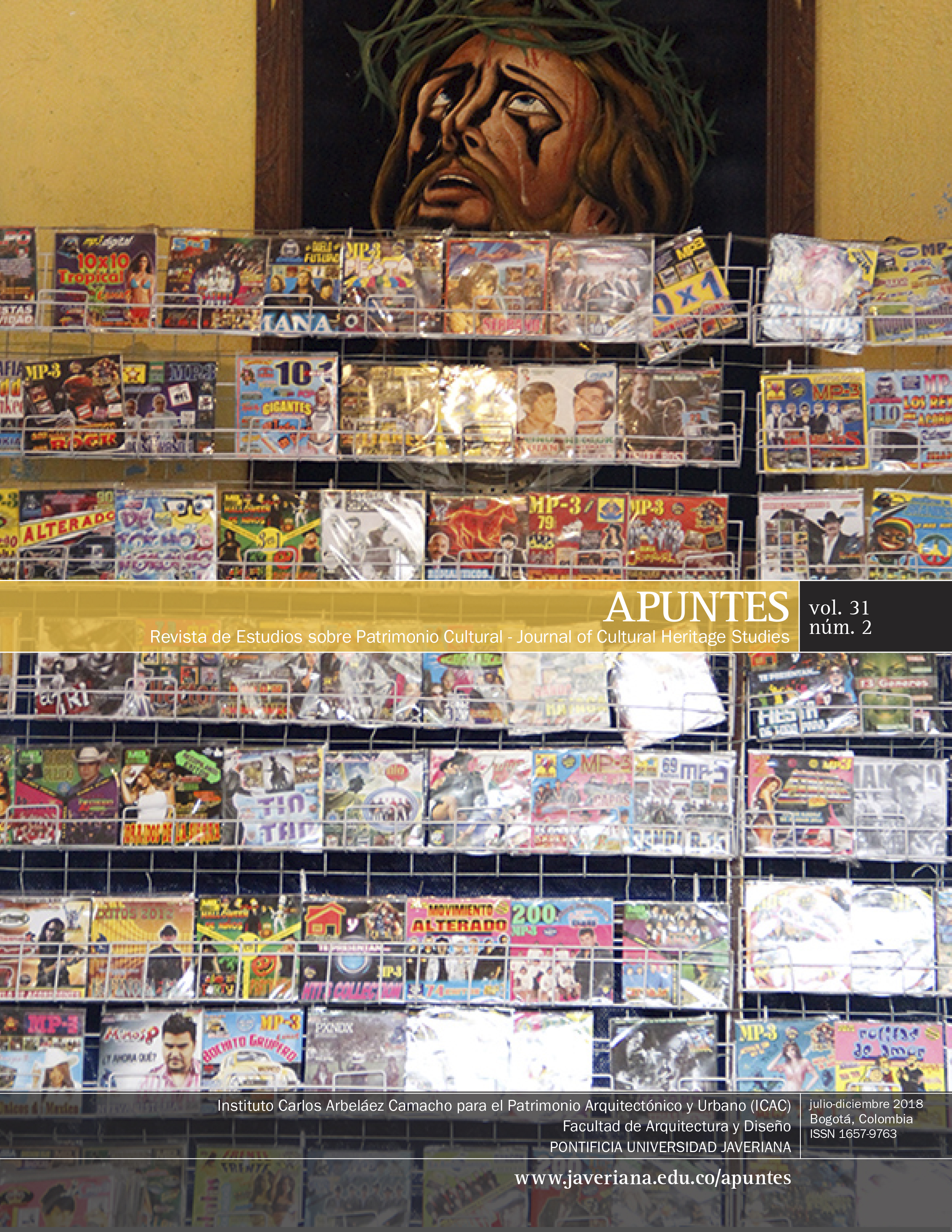Resumen
La historiografía permite conocer el trasegar del concepto de patrimonio así como su transformación en el tiempo. A partir de tres casos historiográficos, el artículo concatena la labor desarrollada por el académico Horacio Rodríguez Plata, las nuevas perspectivas de estudio realizadas en la Escuela de Historia de la Universidad Industrial de Santander (UIS) y el aporte otorgado por el historiador Armando Martínez Garnica, quien establece que el concepto de santandereanidad y las fases productivas en el departamento de Santander, Colombia, han sido los antecedentes del actual auge turístico en la región de la provincia del Socorro. El reconocernos como miembros de una sociedad y partícipes en la recuperación de su memoria y tradiciones nos lleva a hacer un análisis reflexivo para conocer los orígenes de la transformación del patrimonio a partir de un objeto de memoria hasta convertirse en atractivo turístico en el departamento de Santander. Este análisis reflexivo propuesto permite evidenciar los cambios ocurridos en el imaginario colectivo y en la espacialidad constituida por el paisaje y la geografía como constructos de los que el hombre forma parte y los cuales conserva, transforma o altera de acuerdo con su percepción de la realidad. La recuperación del patrimonio debe llevar al hombre a recordar las glorias de los tiempos pasados, preservar ese patrimonio en el presente y consolidar su recuerdo en el futuro.
Aguirre, C. (2015). La historia regional en la perspectiva de la corriente francesa de los Annales. Revista Historia y Memoria, 11, 273-297.
Augé, M. (1998). Las formas del olvido. Barcelona: Gedisa.
Colombia Turismo Web. Recuperado de http://www.colombiaturismoweb.com/DEPARTAMENTOS/SANTANDER/MUNICIPIOS/SOCORRO/SOCORRO.htm.
Foucault, M. (1997). Nietzsche, la genealogía, la historia. Valencia: Pre-Textos.
Gamboa, J. (2018). ¿Qué elegimos recordar? Una reflexión sobre las representaciones del pasado. Recuperado de https://imagenesyespejismos.wordpress.com/2018/09/03/que-se-elige-recordar-una-reflexion-sobre-las-representaciones-del-pasado/.
Giedelmann, M. y Rueda, Ó. (2013). Discursos patrimoniales que orientan la gestión del patrimonio cultural en los planes de desarrollo del Departamento de Santander-Colombia (2008-2015). Revista Memoria y Sociedad, 17(35), 107-123.
González-Varas, I. (2014). Las ruinas de la memoria. México: Siglo XXI.
Guerrero, A. y Pérez, L. (2005). Proyecto educativo de la santandereanidad. Bucaramanga: Gobernación de Santander - Universidad Industrial de Santander.
Latorre, H. (1961). Mi novela. Apuntes autobiográficos de Alfonso López. Bogotá: Ediciones Mito.
Martínez, A. (1991). Hipótesis constitutivas del espacio regional santandereano como objeto de investigación. Revista UIS Humanidades, 20(1), 87-92.
Nietzsche, F. (2006). Segunda consideración intempestiva. Buenos Aires: Libros del Zorzal.
Oviedo, G. (2014). Proyecto: Declaratoria del paisaje cultural del Cañón del Chicamocha como Patrimonio de la Humanidad. En Pérez, Luis Rubén (comp.). Patrimonio cultural y turismo alternativo en el Socorro (Colombia) (pp. 21-38). Bucaramanga: Luis Rubén Pérez.
Patton (2010, May 8). Santandering Hilton día 2: Barichara, San Gil, Panachi [imagen y comentario en web log]. Recuperado de http://www.djibnet.com/photo/parque+nacional+del+chicamocha/santandering-hilton-dia-2-barichara-san-gil-panachi-4930295916.html
Pérez, L. R. (2015). Caracterización de las fuentes de financiación para el sector turismo en Santander (Colombia). Turismo y Sociedad, XVII, 103-126. Recuperado de http://dx.doi.org/10.18601/01207555.n17.06.
Rey, M. E. (2016). Semana de turismo por Santander. Recuperado de http://www.oscarhumbertogomez.com/?p=19061.
Rincón, C. (2015). Avatares de la memoria cultural en Colombia. Bogotá: Pontificia Universidad Javeriana.
Rodríguez, H. (1963). La antigua Provincia del Socorro y la Independencia. Bogotá: Publicaciones Editoriales Bogotá.
Samacá, G. D. (2014). La participación del Centro de Historia de Santander en el centenario de la muerte del “Cóndor de los Andes”: Bucaramanga (1930). Historia y Sociedad, 27. Recuperado de http://www.revistas.unal.edu.co/index.php/hisysoc/article/view/44647/47857.
Spinel, J. F. (2009). El centro de Bucaramanga, aproximación interdisciplinaria para la renovación urbana. Bucaramanga: Universidad Industrial de Santander.
Unesco (2014). Indicadores Unesco de Cultura para el Desarrollo. Recuperado de https://es.unesco.org/creativity/sites/creativity/files/digital-library/cdis/Patrimonio.pdf.
Zuluaga, F. (2014). El tiempo histórico. Historia y Espacio, 1(24), 179-189. Recuperado de http://historiayespacio.univalle.edu.co/index.php/historia_y_espacio/article/view/1234.
La revista Apuntes se encuentra registrada bajo la licencia Creative Commons Reconocimiento 4.0 Internacional. Por lo tanto, esta obra se puede reproducir, distribuir y comunicar públicamente en formato digital, siempre que se reconozca el nombre de los autores y a la Pontificia Universidad Javeriana. Se permite citar, adaptar, transformar, autoarchivar, republicar y crear a partir del material, para cualquier finalidad (incluso comercial), siempre que se reconozca adecuadamente la autoría, se proporcione un enlace a la obra original y se indique si se han realizado cambios. La Pontificia Universidad Javeriana no retiene los derechos sobre las obras publicadas y los contenidos son responsabilidad exclusiva de los autores, quienes conservan sus derechos morales, intelectuales, de privacidad y publicidad.
El aval sobre la intervención de la obra (revisión, corrección de estilo, traducción, diagramación) y su posterior divulgación se otorga mediante una licencia de uso y no a través de una cesión de derechos, lo que representa que la revista y la Pontificia Universidad Javeriana se eximen de cualquier responsabilidad que se pueda derivar de una mala práctica ética por parte de los autores. En consecuencia de la protección brindada por la licencia de uso, la revista no se encuentra en la obligación de publicar retractaciones o modificar la información ya publicada, a no ser que la errata surja del proceso de gestión editorial. La publicación de contenidos en esta revista no representa regalías para los contribuyentes.



